When it comes to raising chickens, size can make a big difference. Large chicken breeds not only offer more meat but also tend to be excellent egg layers and have friendly temperaments, making them ideal for backyard flocks. In this article, we’ll explore the largest chicken breeds in the world, known for their impressive size, unique characteristics, and practical uses.
Sussex
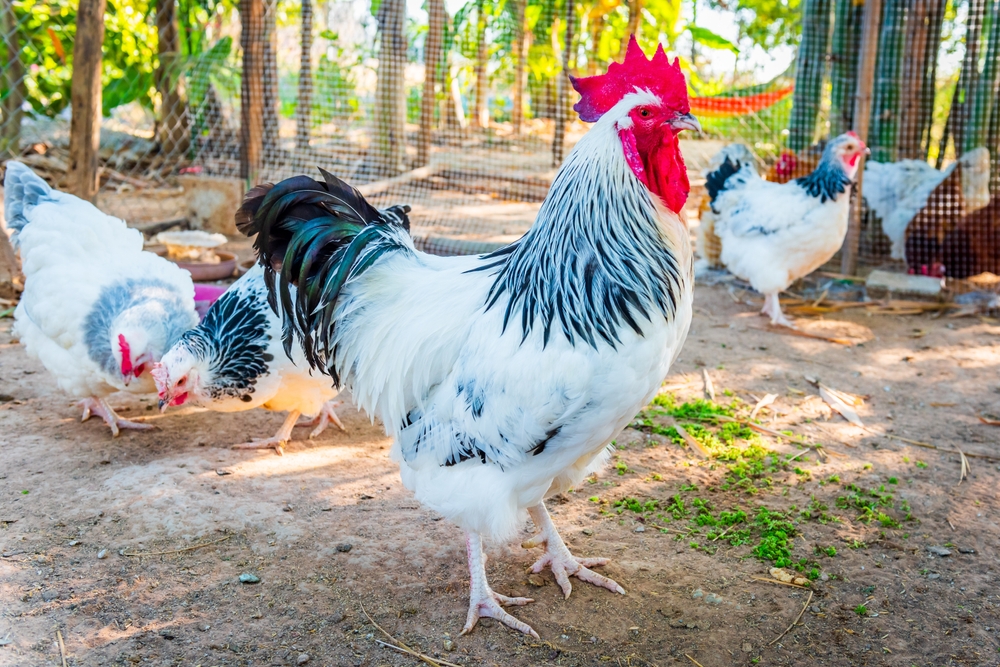
The Sussex chicken breed is one of the most versatile and well-known dual-purpose breeds, valued for both its meat and egg production. Originating in England, they typically weigh between 7 and 9 pounds, with roosters reaching up to 9 pounds and hens around 7 pounds. Standing at about 16 to 20 inches tall, it has a broad, deep body and a rectangular frame, giving it a sturdy and balanced appearance. This breed is an excellent layer, producing around 180 to 200 eggs annually, with eggs ranging from light brown to creamy white. They are known for their calm and friendly temperament, making them ideal for backyard flocks. They adapt well to various climates and are particularly hardy in colder environments. Their beautiful plumage, which can come in a variety of colors such as white, red, speckled, and light, makes them an attractive addition to any flock. They are also known for their foraging abilities, which make them a low-maintenance breed for free-range systems.
Orpington
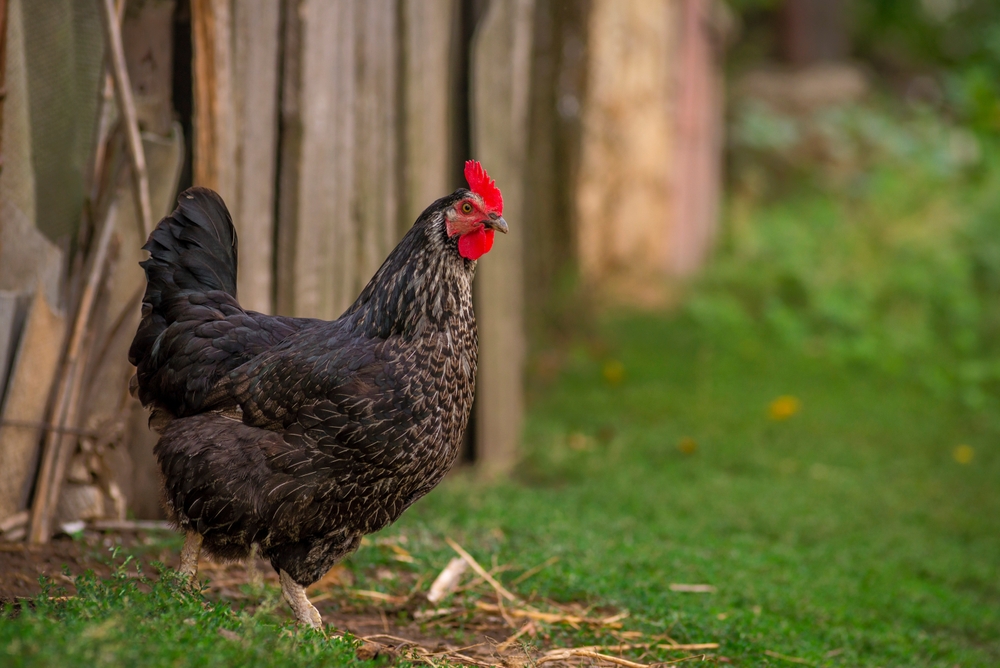
Orpingtons are a British breed that gained popularity for their versatility as both egg layers and meat birds. Roosters can weigh up to 10 pounds, while hens average around 8 pounds, standing about 16 inches tall. Their thick, soft plumage, which comes in buff, black, blue, and white, makes them appear larger than they truly are. They are renowned for their docile and friendly nature, making them a favorite among backyard chicken enthusiasts. These birds lay about 150 to 200 large brown eggs per year and are less prone to going broody, which makes them consistent layers. Their large bodies and calm disposition mean they are well-suited for cold climates.
Australorp

The Australorp is an Australian breed renowned for its egg-laying capabilities and friendly temperament. Roosters weigh about 10 pounds, and hens around 8 pounds, standing approximately 27 inches tall. They are highly productive layers, with some hens producing more than 300 large brown eggs per year, making them one of the best layers among large breeds. Despite their impressive size, they are docile and make great pets for families with children. Their glossy black feathers give them a sleek, elegant appearance. Unlike many heavy breeds, they are excellent foragers and do well in both free-range and confined conditions. They are also known for their hardiness, thriving in various climates, from hot to cold.
Langshan
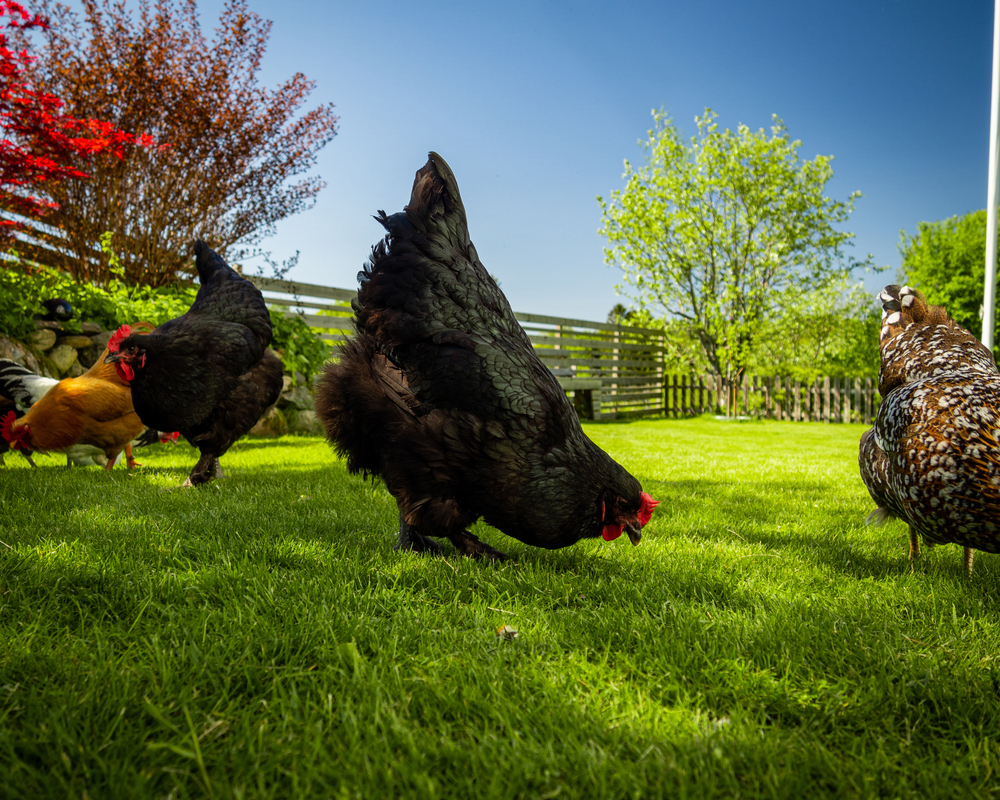
Langshans are tall, graceful chickens that originated in China and were later developed in Germany. Roosters can reach heights of up to 32 inches and weigh around 10 pounds, while hens weigh about 8 pounds. Known for their long legs and upright stance, they have a distinct silhouette compared to other large breeds. They are dual-purpose chickens, valued for both their meat and egg production, with hens laying around 150 to 200 medium-sized brown eggs annually. They are relatively rare and are often bred for show due to their striking appearance, which includes black, white, and blue color varieties. Despite their size, they are known for their calm and friendly temperament, making them a good addition to any flock.
Cornish
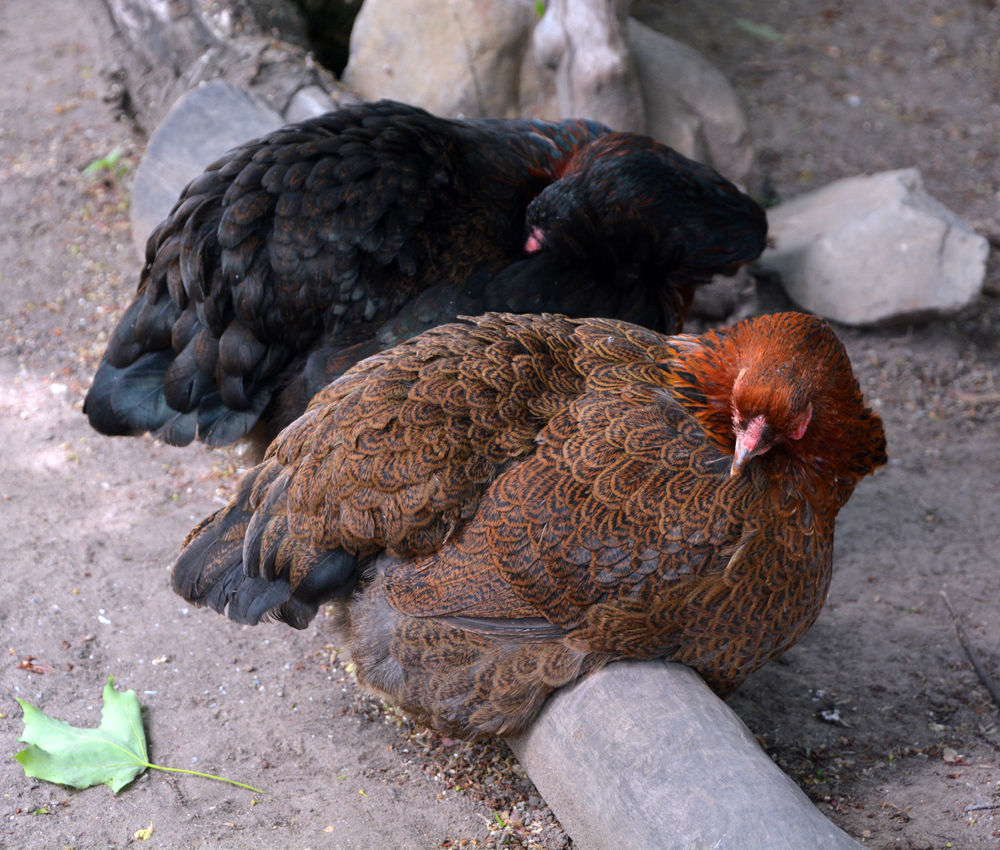
The Cornish, also known as Indian Game, is a large breed originally developed in Cornwall, England. Roosters typically weigh around 10.5 pounds, and hens are slightly smaller at 8 pounds. This bird was initially bred for cockfighting but later became valued for its muscular build, making it one of the best breeds for meat production. They are stocky, with broad, muscular breasts, and have a short, squat appearance compared to other large breeds. They lay around 80 to 120 eggs annually, making them less prolific layers than other breeds. They have a calm temperament but can be aggressive if provoked. Due to their large muscle mass, they are less active and prefer confinement, which makes them more susceptible to heat stress.
Malay
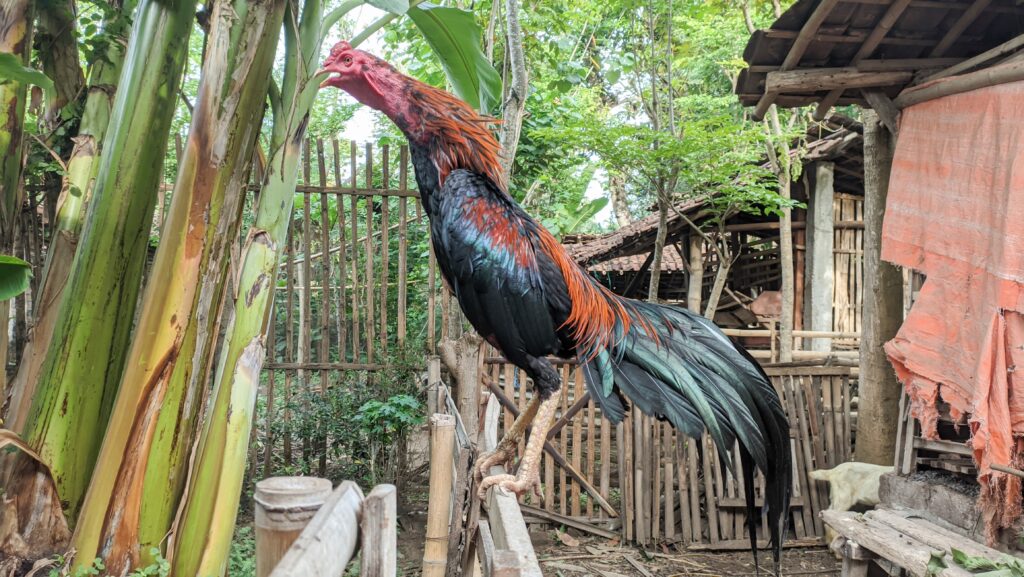
The Malay chicken stands out as one of the tallest chicken breeds, with some reaching heights of up to 36 inches. Originating from Southeast Asia, they are recognized for their upright stance, thick bones, and muscular build. While they aren’t as heavy as the breeds toward the latter part of the list, Malay roosters weigh around 9 to 11 pounds, and hens can weigh between 7 to 9 pounds. Despite their size, they are not ideal for egg production, as they lay only 70 to 120 eggs annually. Known for their aggressive temperament, this breed was historically used for cockfighting. However, they are now more commonly raised for meat. Due to their height and active nature, they require a lot of space and are best suited for experienced poultry keepers.
Cochin
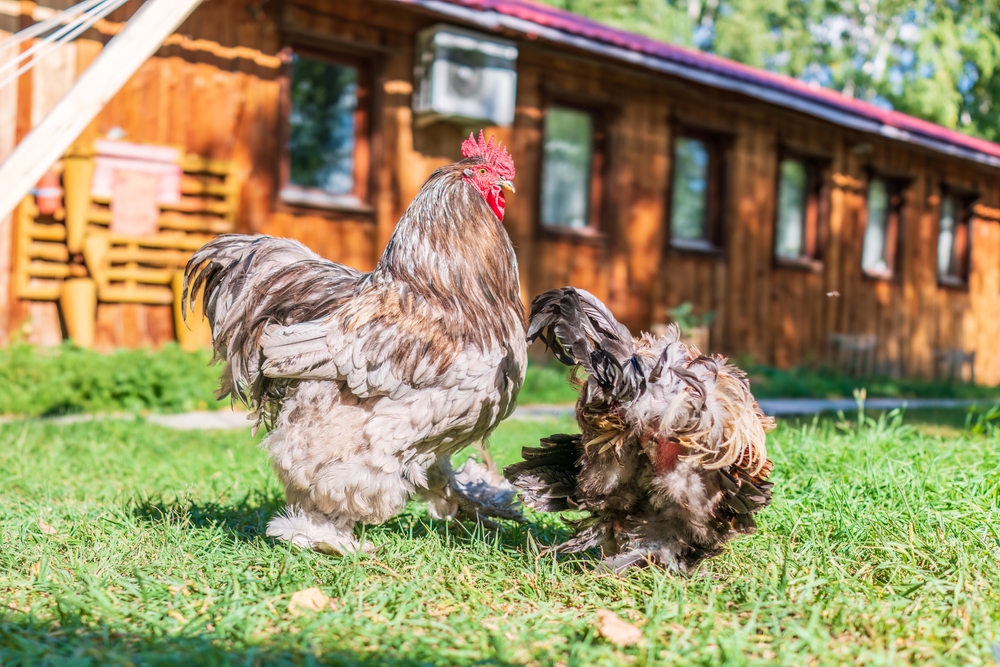
Cochins are known for their voluminous feathers and fluffy appearance, which make them seem larger than they actually are. Roosters weigh around 11 pounds, while hens weigh approximately 8 pounds. This breed is easily recognized by its feathered legs and soft plumage, giving it a round, fluffy look. They are very gentle and calm, making them ideal pets or show birds. Although they are not prolific egg layers, they produce about 150 to 200 medium-sized eggs per year and are excellent brooders, often hatching the eggs of other poultry. Due to their feathered feet, they are better suited for cooler climates, as they may struggle in hot, humid environments. Their colors range from black, white, buff, to more exotic shades like blue or partridge.
Brahma
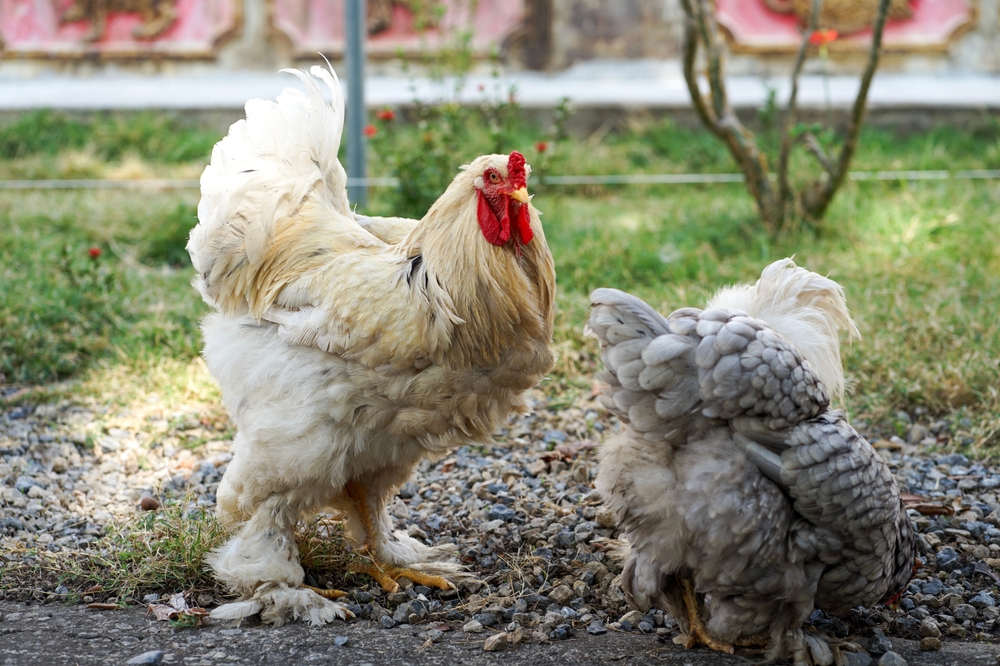
Brahmas are known as the “King of Chickens” due to their massive size and regal appearance. Originally from India, these birds were developed in the U.S. and became popular for meat production. Roosters typically weigh around 12 pounds, and hens are close behind at 10 pounds, with a height reaching up to 30 inches. They are slow-growing but are highly regarded for their gentle and calm nature, making them excellent foragers and good with children. Their feathered legs and feet give them a distinct appearance and make them better suited for colder climates. Despite their large size, they are moderate layers, producing about 150 to 180 medium-sized brown eggs annually. Their soft, fluffy feathers, which come in colors like light, dark, and buff, give them a larger appearance than they already have.
Jersey Giant
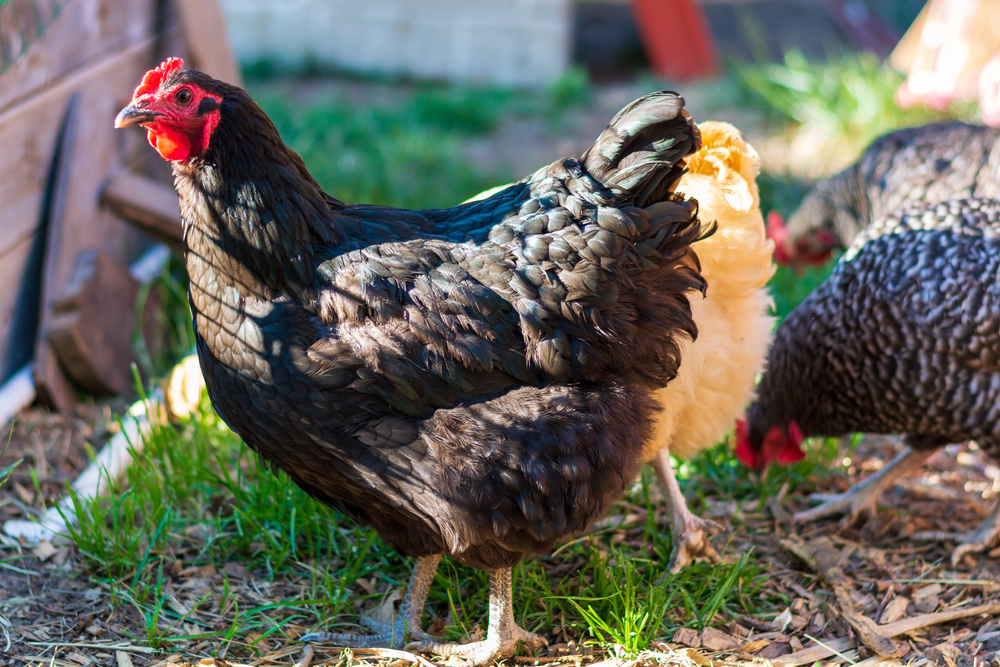
The Jersey Giant is the undisputed largest chicken breed in the world. Originating in the United States during the late 1800s, it was bred to replace turkeys for meat production. A full-grown rooster can weigh between 13 to 15 pounds, while hens usually weigh around 10 to 12 pounds. Standing 20 to 26 inches tall, these birds are massive and slow to mature, taking up to 10 months to reach their full size. Despite their intimidating size, they are known for their friendly and docile temperament, making them a popular choice for backyard flocks. They produce around 150 to 200 large brown eggs per year. With their calm nature and hardiness, they adapt well to various climates, particularly colder regions. This breed is also recognized for its beautiful black, white, or blue plumage, adding aesthetic appeal to its impressive size.
This article originally appeared on Rarest.org.
More from Rarest.org
22 Unusual Insects Native to the World`s Most Remote Jungles
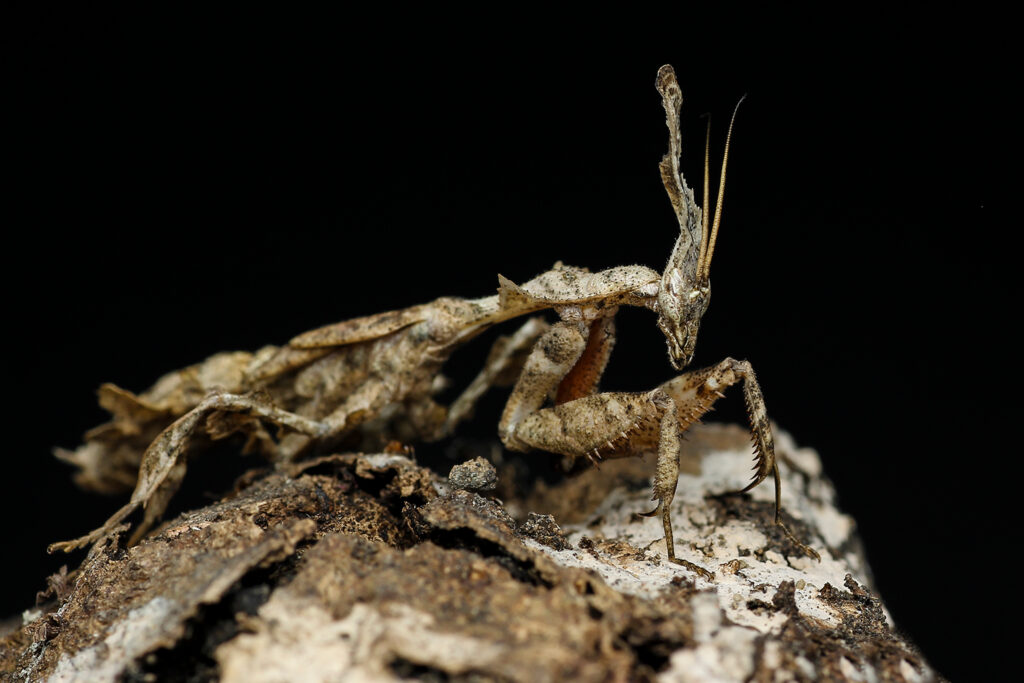
Deep within the world’s most remote jungles, some insects defy the imagination. These creatures are often stunning, bizarre, and unlike anything you might find in your backyard. Read More.
16 Classic Trucks That Defined American Roadways

Classic trucks have long been a backbone of American roadways. Built for durability and performance, these trucks have earned their place in history. Read More.
10 Endangered Cultural Practices Preserved by Indigenous Tribes
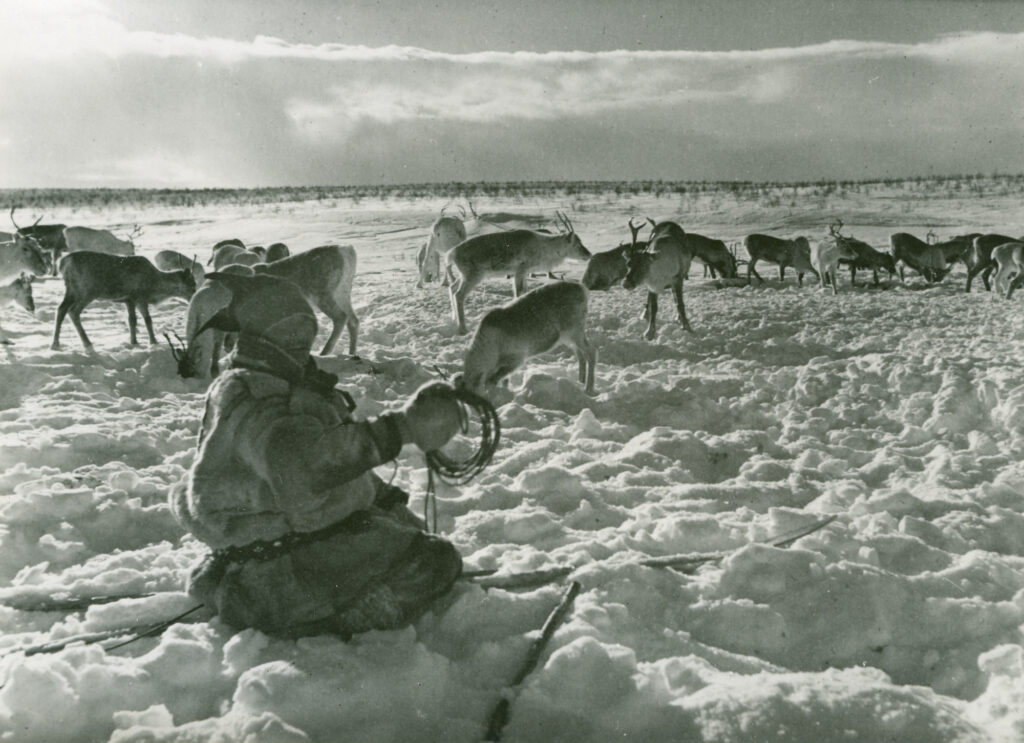
Indigenous tribes around the world hold a wealth of cultural practices that have endured for generations. Many of these traditions are at risk due to modernization, environmental changes, and external pressures. Read More.
